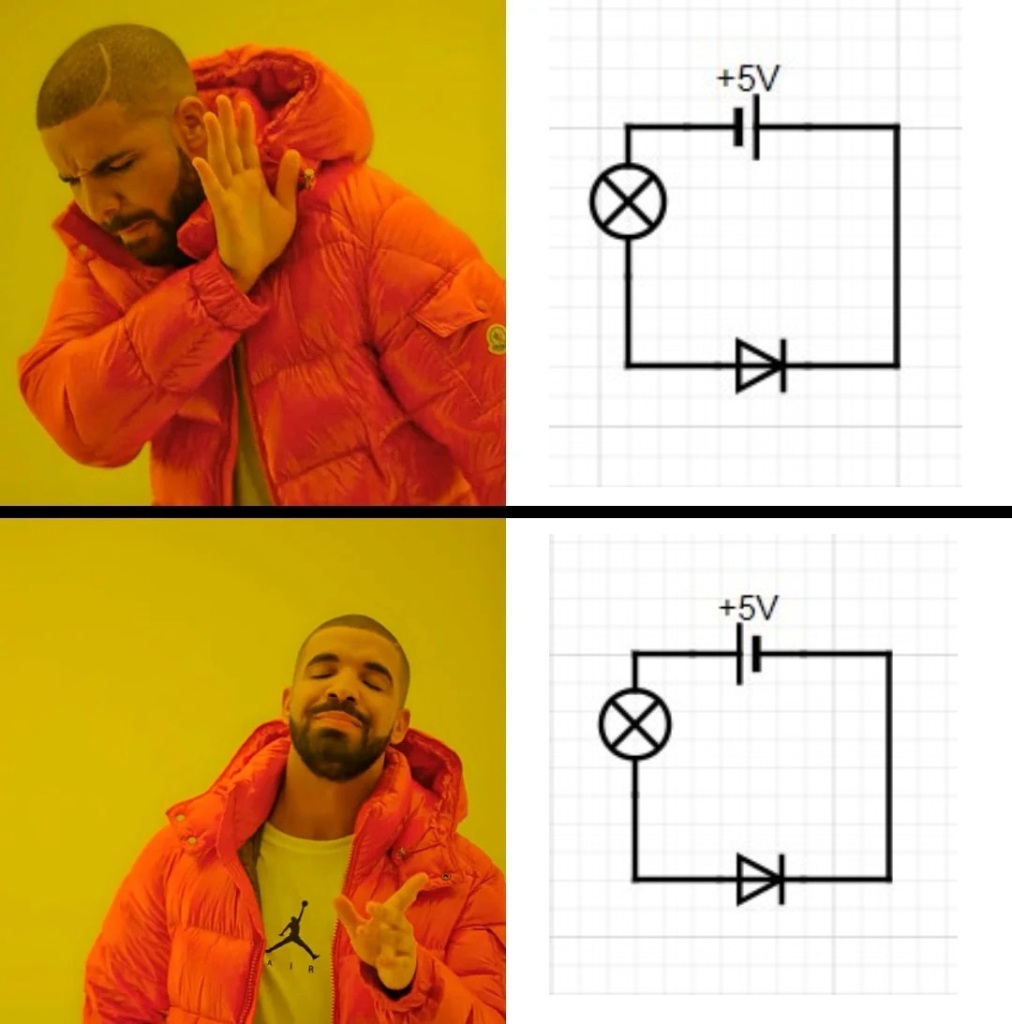I’ve written about the self-sabotage of entertaining but counterproductive lesson features before (see the Teaching Hall of Shame) but it seems that, despite being aware of the risks, I’m not immune.
Although not at the level of the flaming tampon lesson, I’ve recently experienced another example of when an attempt to engage can backfire and lead to poor learning. Please take this as a gentle reminder to focus on the important stuff!
Teaching diodes: what i normally do.
Diodes is a relatively easy thing to teach at gcse. My normal strategies include:
- Describe what it does (allow current to flow in one direction only)
- use some analogies that are familiar to them (one way street, turn style at the football stadium, valves in the heart)
- Show them the circuit symbol and ask them which way the current would be flowing (it’s bloomin’ obvious as the symbol is basically an arrow showing direction current can flow). Back this up with a few diode circuit diagrams, some with the diodes wired backwards, and ask them to spot the problems and solve.
- Show them the IV graph and ask them how it shows diode behaviour.
Where I went wrong this time
I’m lucky enough to teach 3 wonderful Year 10 Combined Science classes. when teaching one of these classes (let’s call them the meme-fail class) about diodes I deviated from my normal methods. I don’t know why; maybe I was overtired or something. Anyway, during the circuit symbol/diagram phase I somehow ended up referring to the very well known Drake Hotline Bling meme. It was along the lines of “diode pointing in direction of current = good, against current = bad”.
Meme-fail class seemed to appreciate this and one of them even pencil sketched the meme on a post-it. I told them I’d attempt to do a proper Drake meme image for them if it helps them remember it.
Here it is.

“Great, I’ve made diodes interesting, they’ll never forget now!“ I thought.
Wrong.
Stop doing remembering wrong!
A month later, recall questions at the start of the lesson. I tend to use similar questions with all 3 classes (and tweak accordingly). Guess which was the only class that struggled with a diode question? Yep, meme-fail.
Some got it. But they performed significantly worse than the other two classes. And I got verbal feedback like “it’s the Drake one isn’t it? I can’t remember what it does”.

Richard Dawkins (the creator of the term “meme” before it became ubiquitous with the digital images and gifs that permeate social media) could have warned me of this. One of the features of memes (whether the unit of cultural transmission proposed by Dawkins or the modern use of the term) is that memes aren’t necessarily good or useful. What they are good at is replicating themselves. In this example the meme was so memorable that it stopped them from remembering what was really important. The message was lost in the medium. In the words of Daniel C. Dennett (paraphrasing Dawkins);
“…replicative might does not make right…”
Consciousness Explained by Daniel C. Dennett
—
In an unplanned attempt to be entertaining and culturally relevant I’d inadvertently but actively reduced the chance of my pupils learning what they’re meant to learn.
I’m taking this as a reminder to myself that although my teaching bad habits aren’t what they were in the first half of my career, they can sneak back in if you’re not careful.
Vigilance comrades!